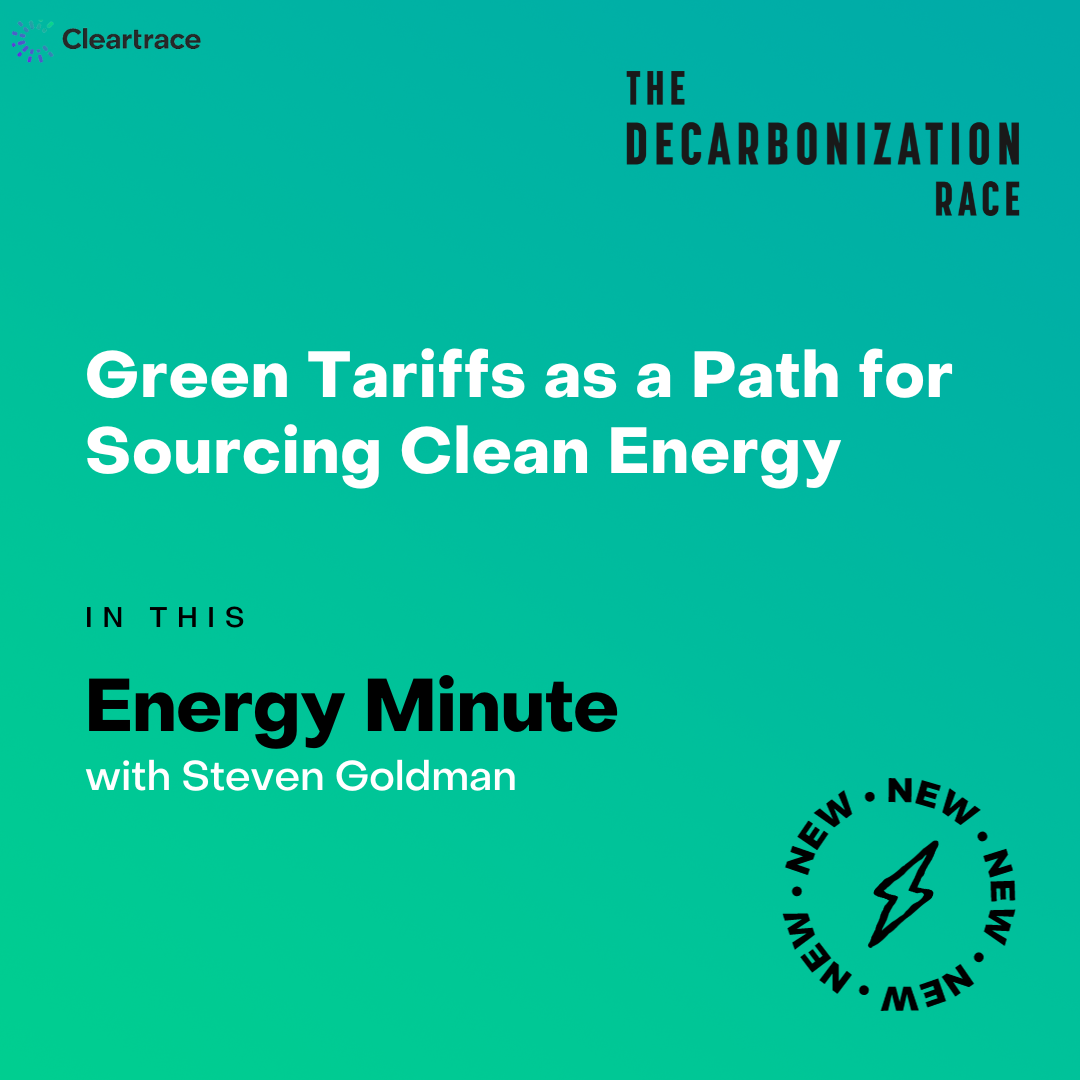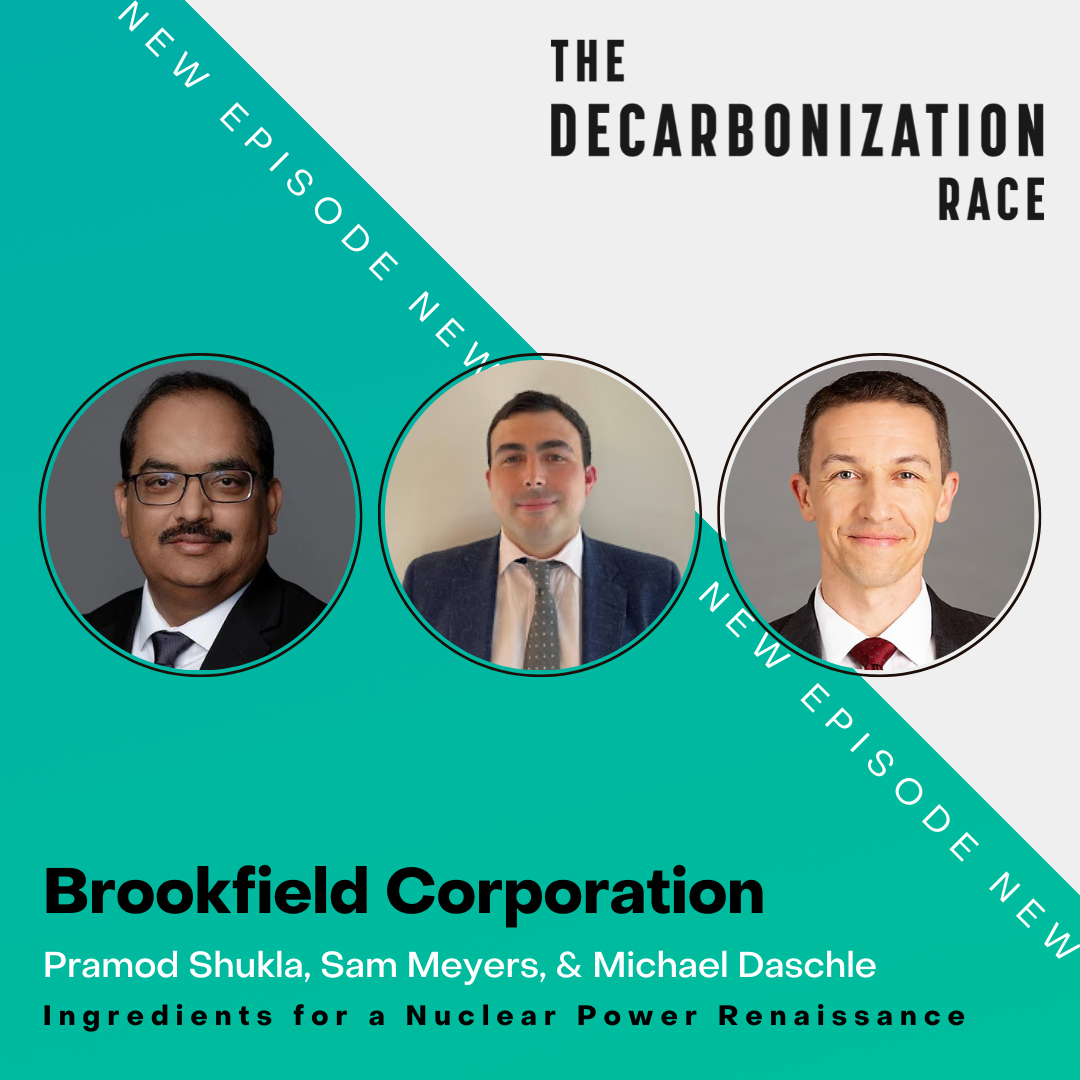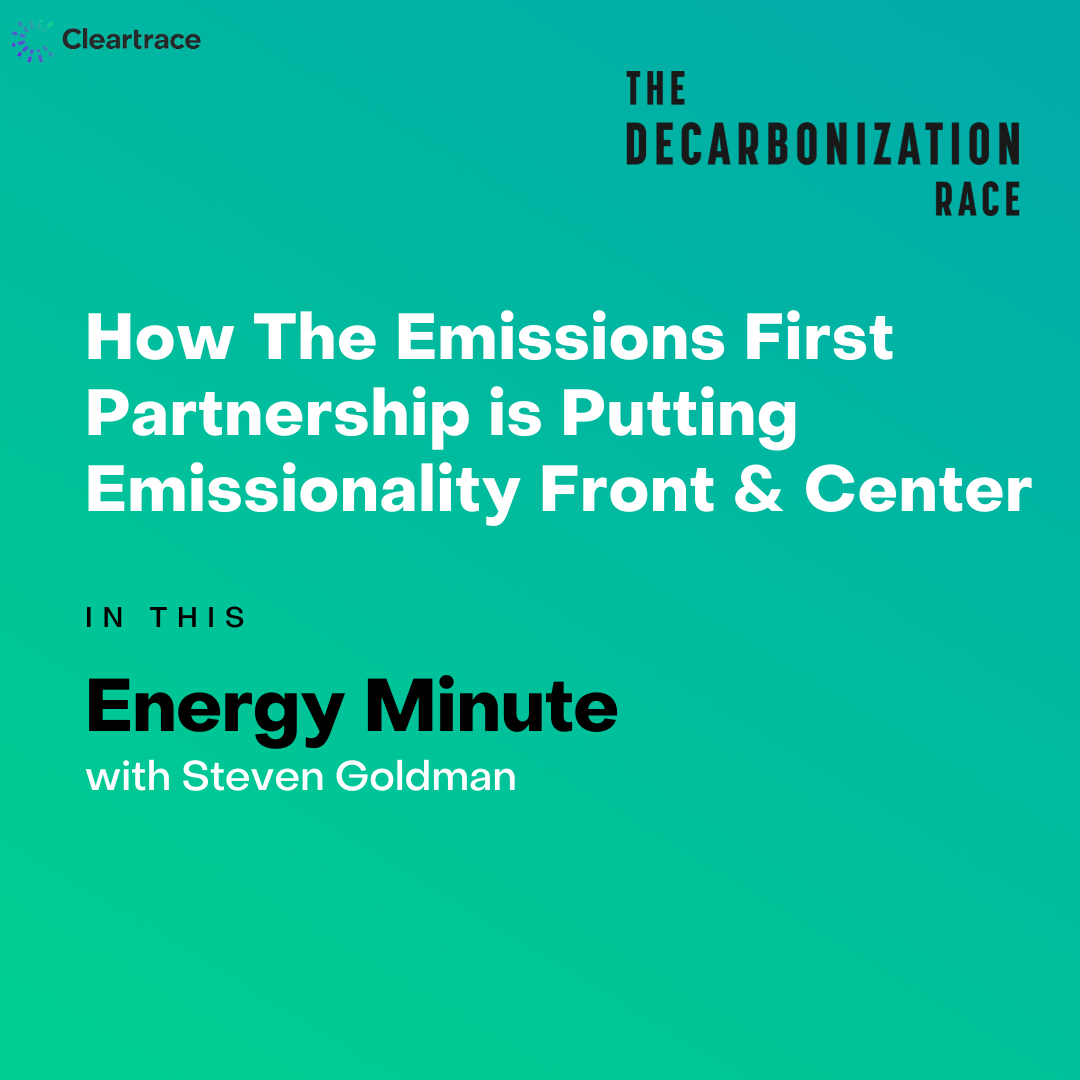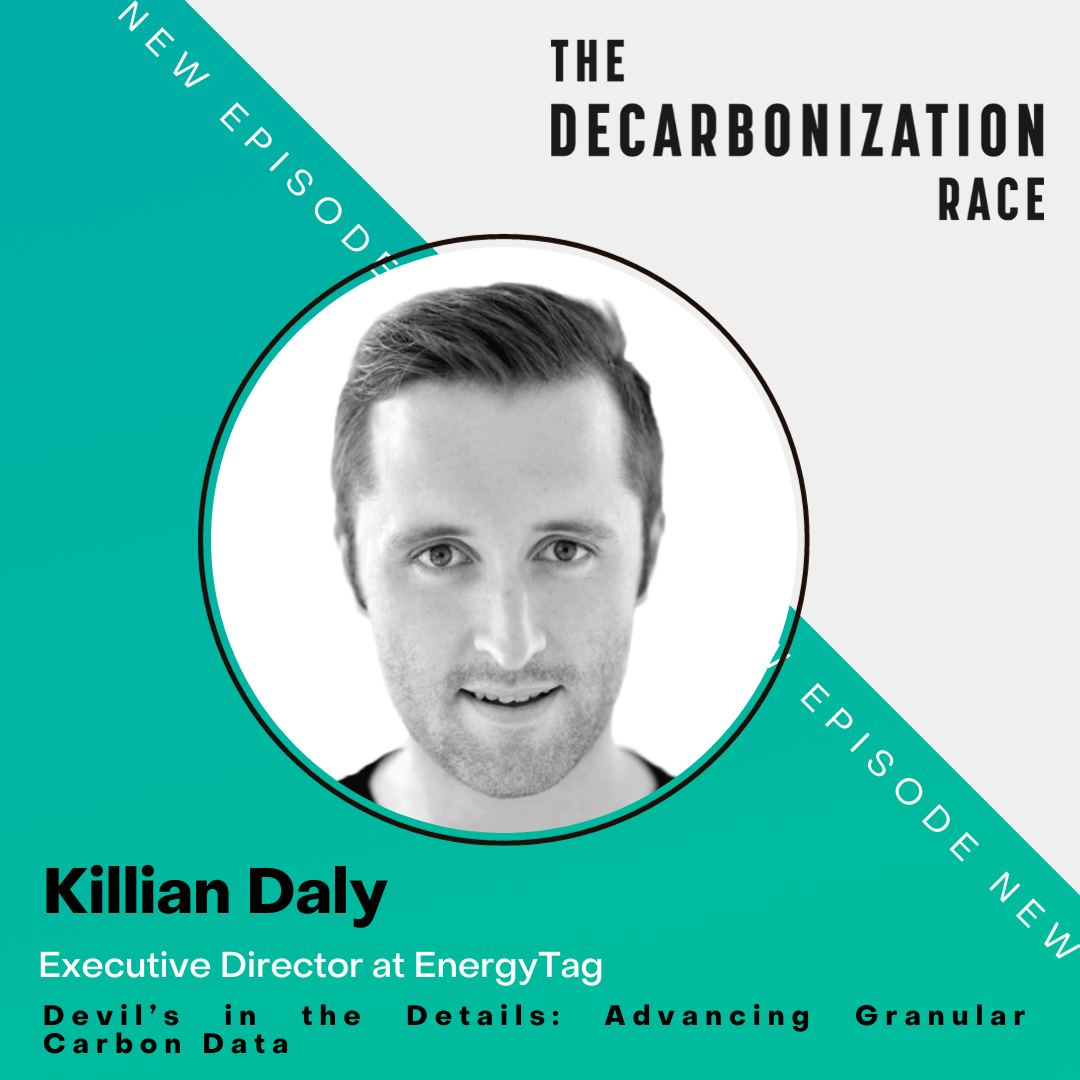Energy Minute: Green Tariffs as a Path for Sourcing Clean Energy
On this Energy Minute mini-sode, Steven Goldman explores the world of “green tariffs,” voluntary utility programs that enable eligible customers to buy the “bundled” energy and associated Renewable Energy Certificates (RECs) from renewable energy projects. These programs are typically offered by local electric utilities and approved by state public utility commissions (PUCs). He explains the main types of green tariffs and how they are an important tool for companies seeking to procure clean energy, as they offer a number of benefits, including predictability, reduced upfront costs, and brokerless access to clean energy. We'll discover the benefits of participating in these programs, including access to clean energy without high upfront costs and the ability to reduce operational carbon emissions. Join us as we uncover some of the more innovative green tariff programs and how utilities are working towards meeting the needs of companies in their clean energy sourcing.

On this Energy Minute mini-sode, Steven Goldman explores the world of “green tariffs,” voluntary utility programs that enable eligible customers to buy the “bundled” energy and associated Renewable Energy Certificates (RECs) from renewable energy projects. These programs are typically offered by local electric utilities and approved by state public utility commissions (PUCs).
He explains the main types of green tariffs and how they are an important tool for companies seeking to procure clean energy, as they offer a number of benefits, including predictability, reduced upfront costs, and brokerless access to clean energy. We’ll discover the benefits of participating in these programs, including access to clean energy without high upfront costs and the ability to reduce operational carbon emissions. Join us as we uncover some of the more innovative green tariff programs and how utilities are working towards meeting the needs of companies in their clean energy sourcing.
Key Takeaways
- Green tariffs are voluntary utility programs that enable eligible customers to buy green power – both the energy and the associated RECs – generated by renewable energy projects. They are more common in traditionally regulated electricity markets and are an avenue for companies to source clean energy without having to pursue a bilateral agreement with a power producer.
- There are three main types of green tariffs: subscription programs, sleeved power purchase agreements (PPAs), and market-based rate programs.
- Green tariffs offer several benefits, including predictability, reduced upfront costs, and brokerless access to clean energy. As of January 2023, there are 50 approved or pending green tariff programs offered by 40 utilities in 28 states.
References
- CEBA’s Green Tariffs report (updated in Jan 2023): https://cebuyers.org/solutions/procure-clean-energy/green-tariffs/#:~:text=Green%20tariffs%20are%20voluntary%20utility,a%20customer’s%20current%20electricity%20bill
- EPA primer on Green Tariffs: https://www.epa.gov/green-power-markets/utility-green-tariffs#:~:text=Utility%20green%20tariffs%20are%20optional,a%20special%20utility%20tariff%20rate
- S&P Global, “Utility green tariffs fuel growth in US corporate renewables market” : https://www.spglobal.com/marketintelligence/en/news-insights/research/utility-green-tariffs-fuel-growth-in-us-corporate-renewables-market
Transcript
Steven Goldman: Welcome back to the Decarbonization Race podcast. I’m Steven Goldman. As you may have noticed, this season we’re shining more of a light on the supply side of the clean energy equation, providing perspectives and insights from the sourcing of clean energy and sustainable fuels. We’ve talked at length about the role of renewable energy certificates in procuring clean energy, whether bundled with or unbundled from renewable generation and touched on power purchase agreements. But there are other pathways for companies, large or small, to procure clean energy through their utilities, green tariffs. Let’s dive in.
First off, we want to offer thanks to the Clean Energy Buyers alliance, or CEBA, a key industry group tracking clean energy deals, and in particular that has put out a great report tracking green tariff programs. They put together an excellent report on the subject that was updated in 2023 to reflect the latest proposed or approved programs, and we refer to that extensively when putting together this segment. You can find a link to the report in our show notes.
Green tariffs are voluntary utility programs that enable eligible customers to buy green power, both the energy and the associated RECs from large scale renewable energy projects. Instead of having to pursue a bilateral agreement with a power producer and handle that independently of a utility, green tariffs allow companies to source through their utility either as a separate tariff or as a rider on the customer’s existing bill.
So why would customers want to participate? First, these programs are most common in traditionally regulated electricity markets, where customers have to access clean energy through their local utility. Second, green tariffs ideally draw from new clean energy projects that are within the same grid area as the customers load. If a company is looking to more closely align green power purchases with where its key facilities are operating, these programs offer an avenue to do that rather than sourcing energy and or wrecks from another area via a virtual power purchase agreement. Customers also often need a procurement channel like green tariffs because they can’t meet their procurement needs with onsite renewable energy generation like onsite solar.
Green tariff programs largely take one of three forms. Most popular today are subscription programs. These allow a range of customers to subscribe to a portion of a large clean energy project or the output of a portfolio of projects. In this case, the utility holds the power purchase agreement with the asset owner or owns the project or portfolio itself. Second, there’s the sleeved power purchase agreement model, where customers can access individual physical power purchase agreements through the utility rather than having to seek out and contract a PPA themselves, which can take a great deal of time and effort. And lastly, there are market based rate programs which allow for companies to participate in wholesale markets via the utility, either directly contracting with a developer or where the customer can choose which resources they’re procuring from. At this point, there are only a few market-based rate programs available, and most utilities use one of the other two models in their programs. Taken together, green tariff programs already represent a sizable portion of total clean energy deal activity: over three gigawatts or roughly a quarter of the deals that have been tracked by CEBA.
So what are the benefits of participating in green tariffs? Well, if you’re a small or medium sized business, you may not have the resources to build on site generation or pursue a PPA on your own. Green tariffs offer an avenue for aggregation or direct access to PPAs. Green tariffs can also provide more predictable pricing depending on the length of the contract, if fixed prices are an option, or by using market based rates. They also offer a way to access clean energy without high upfront capital costs, and a way to do so without the need for a broker. Utilities have increasingly created green tariffs because they represent a way to help corporate and industrial customers have a clear avenue for accessing clean energy and reducing their operational carbon emissions.
As of January 2023, there are 50 approved or pending green tariff programs offered by 40 utilities in 28 states, and among these, several utilities are already offering programs that are at the leading edge in line with companies efforts like Google to adopt 24/7 carbon free energy or time aligned procurement. Georgia Power is one example. Its Clean and Renewable Energy subscription program has its total capacity of 2.1 gigawatts, which includes an around the clock option that pairs carbon free resources with energy storage.
Another example is Duke Energy’s programs in the Carolinas. In North Carolina, customers can procure renewable energy with an energy storage option that would allow for time match procurement. And in South Carolina, customers with at least 15 demand have an option to partner with Duke Energy on a gridscale energy storage facility to add dispatchability and time matching.
All in all, these programs are scaling up companies ability to source clean energy. But as green tariffs gain further adoption and scale, access to granular data is going to become a key concern for companies seeking to stand behind decarbonization claims in their ESG and sustainability reporting. Utilities will need to grow their data reporting capabilities to ensure they can meet those needs. But as we often say on the podcast, we’re in this race together and utilities can of those capabilities in parallel with expanding their portfolios.
Thanks again for joining us on this Energy Minute on The Decarbonization Race. For more of the latest sustainability and clean energy insights, visit us at Cleartrace dot io.










